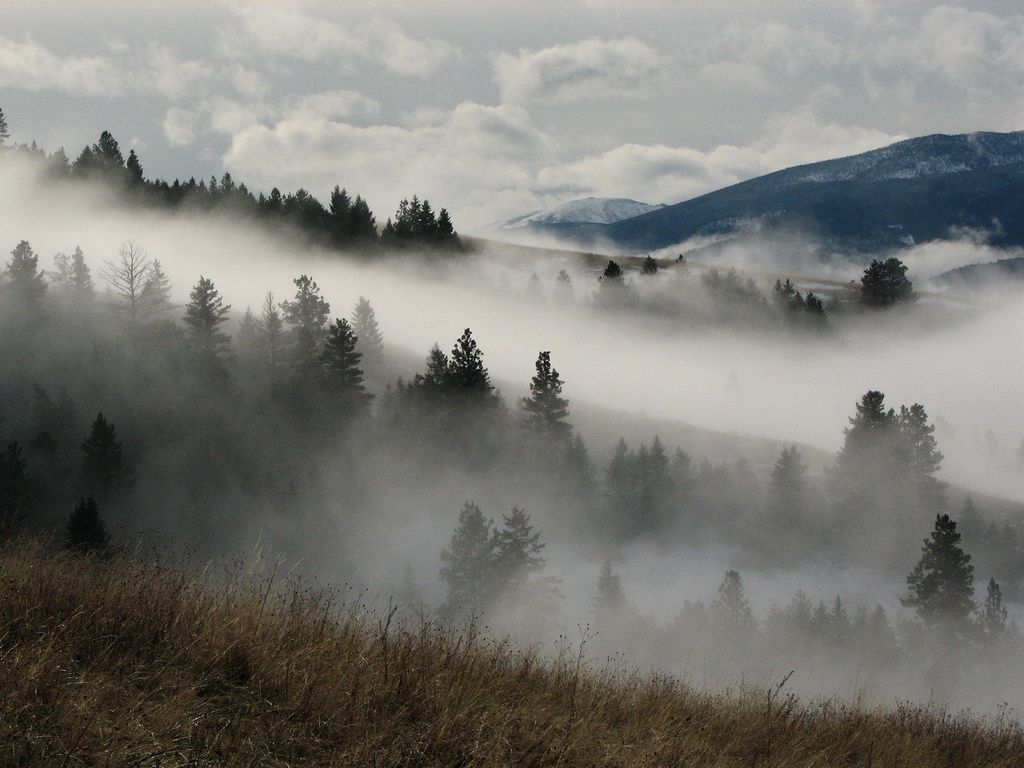The marriage between vegetation and architecture creates visual symphonies that transform urban landscapes into living canvases of extraordinary beauty and function.
Throughout history, humans have sought to blend the built environment with nature, creating spaces that not only serve practical purposes but also inspire aesthetic appreciation. This intersection has evolved from simple garden courtyards to complex vertical forests that redefine modern skylines. The patterns emerging from this union tell stories of sustainability, innovation, and our eternal quest to harmonize with the natural world.
Today’s architects and landscape designers are pushing boundaries, experimenting with green walls, rooftop gardens, and integrated planting systems that challenge our perception of what buildings can be. These creations aren’t merely decorative additions—they represent a fundamental shift in how we conceptualize urban spaces and our relationship with the environment.
🌿 The Historical Roots of Green Architecture
The concept of integrating vegetation with architecture isn’t new. Ancient civilizations understood the value of bringing nature into their built environments. The Hanging Gardens of Babylon, one of the Seven Wonders of the Ancient World, exemplified early ambitious attempts to merge lush vegetation with architectural grandeur.
Persian gardens introduced the concept of paradise gardens, where water features, shade trees, and fragrant plants created microclimates within arid landscapes. These designs influenced Islamic architecture, which later spread throughout the Mediterranean and beyond. The internal courtyards of traditional homes in Spain, Morocco, and the Middle East demonstrate how vegetation can regulate temperature while creating private sanctuaries.
During the Renaissance, Italian villa gardens showcased how formal geometric patterns could organize nature into architectural statements. These designs emphasized symmetry, perspective, and the control of natural elements to create harmonious outdoor rooms that extended living spaces beyond walls.
The Industrial Revolution temporarily disrupted this relationship, as cities prioritized function and density over green integration. However, visionaries like Frederick Law Olmsted championed urban parks, recognizing that city dwellers needed access to nature for physical and mental health.
Contemporary Patterns Emerging from Bio-Integrated Design
Modern architecture has rediscovered vegetation not just as decoration but as essential infrastructure. The patterns created by this integration serve multiple purposes: environmental regulation, aesthetic enhancement, and psychological wellbeing. These contemporary approaches generate striking visual rhythms that distinguish buildings in crowded urban contexts.
Vertical gardens transform flat facades into three-dimensional tapestries. Pioneer botanist Patrick Blanc developed systems allowing plants to grow on nearly vertical surfaces without soil, opening possibilities for buildings to become living organisms. These installations create cascading patterns that change with seasons, flowering cycles, and growth patterns, ensuring buildings never look the same twice.
Green roofs have evolved from simple extensive systems to complex intensive gardens that function as public spaces. The undulating patterns of sedums on extensive roofs contrast with the structured designs of accessible roof gardens featuring walking paths, seating areas, and diverse planting schemes. From above, these create quilted patterns across urban rooftops, visible from surrounding high-rises.
Biophilic Design Principles in Action
Biophilic design recognizes humans’ innate connection to nature and intentionally incorporates natural elements into built environments. This approach generates patterns that resonate psychologically while providing tangible environmental benefits. The visual impact comes from thoughtful arrangement rather than random placement.
Fractal patterns found in nature—branching trees, leaf venation, root systems—inspire architectural elements that feel instinctively comfortable. When vegetation follows these natural geometries while interacting with geometric building forms, the contrast creates visual interest that engages observers without overwhelming them.
Biomorphic forms and patterns mimic natural shapes in building materials and structures. When actual vegetation grows alongside these biomimetic designs, the effect amplifies, creating seamless transitions between living and non-living elements. This strategy appears in everything from facade details resembling bark texture to structural columns that branch like trees.
🏙️ Iconic Examples Reshaping Urban Skylines
Certain landmark projects have demonstrated how vegetation and architecture can create internationally recognized patterns and forms. These buildings serve as case studies for architects worldwide, proving that green integration can work at scale.
Bosco Verticale in Milan features two residential towers with over 900 trees and 20,000 plants integrated into balconies and facades. The irregular pattern of vegetation creates organic contrast against the towers’ rectangular forms. Seasonal changes transform the buildings’ appearance dramatically—lush green in summer, fiery colors in autumn, skeletal in winter—making them dynamic participants in the urban landscape rather than static monuments.
Singapore’s Parkroyal Collection Pickering hotel showcases terraced gardens that cascade down the building’s facade. The curved architectural forms create natural planting beds at multiple levels, generating horizontal green stripes that break up the building’s mass. This design reduces the visual impact of a large structure while providing 15,000 square meters of sky gardens and greenery.
The CaixaForum Madrid features a vertical garden designed by Patrick Blanc covering 460 square meters with over 15,000 plants from 250 species. The installation transforms a windowless wall into a living artwork, creating textural patterns that shift as different species bloom and grow at varying rates.
Residential Innovations Bringing Patterns Home
Green integration isn’t limited to commercial landmarks. Residential architecture increasingly incorporates vegetation in ways that create distinctive patterns while improving living quality. These applications range from simple window boxes arranged in rhythmic patterns to entire facades designed as vertical gardens.
Row houses in cities like Amsterdam and London feature coordinated facade greening initiatives where climbing plants create unified streetscape patterns. When neighbors coordinate species and training methods, entire blocks transform into green corridors with cohesive visual identity.
Courtyard housing developments worldwide are rediscovering traditional arrangements where shared green spaces create central focal points. The geometric patterns of pathways, planting beds, and gathering spaces create visual order while providing residents with direct nature access.
The Science Behind Effective Green Patterns
Creating successful vegetation-architecture integration requires understanding both botanical science and architectural principles. The most striking patterns emerge when designers consider plant growth habits, structural requirements, maintenance needs, and visual composition simultaneously.
Plant selection determines pattern sustainability. Species must suit local climate, tolerate specific growing conditions, and achieve desired visual effects. Mixing evergreen and deciduous plants creates year-round interest while generating seasonal pattern variations. Texture combinations—fine grasses against broad-leafed shrubs, delicate flowers near bold foliage—add depth and complexity.
Structural considerations dictate what patterns are physically possible. Weight loads limit extensive vegetation on certain structures. Water delivery systems must reach all planted areas reliably. Drainage prevents water damage while supporting plant health. These practical constraints shape final patterns as much as aesthetic preferences.
Maintenance accessibility influences pattern longevity. Elaborate designs requiring constant professional care often deteriorate when budgets tighten. Successful long-term installations incorporate self-sustaining ecological balances, with plant communities that naturally regulate themselves while maintaining desired appearances.
Color Theory in Living Architecture
Color patterns in vegetation-architecture integration follow different rules than static design. Living plants change color seasonally, respond to stress, and mature over time. Successful designs anticipate these changes, creating pattern frameworks that remain coherent despite natural variations.
Monochromatic green schemes rely on texture and form rather than color contrast. Different leaf shapes, growth habits, and shades of green create subtle patterns that change with lighting conditions. These approaches work particularly well on buildings where architectural form provides primary visual interest.
Contrasting color schemes use flowering plants, colored foliage, or autumn color to create dramatic patterns against building materials. Red and orange blooms pop against gray concrete. Purple foliage contrasts with white facades. These bold choices create landmark buildings but require careful species selection to ensure reliable color delivery.
🌍 Environmental Impact Patterns
Beyond aesthetics, vegetation-architecture integration creates measurable environmental patterns that benefit urban ecosystems. These effects ripple outward, influencing microclimates, wildlife corridors, and human health in surrounding areas.
Temperature regulation occurs when vegetation shades building surfaces and transpires moisture. Green walls can reduce surface temperatures by 10°C or more, lowering cooling costs and reducing urban heat island effects. When multiple buildings in an area adopt green facades, collective cooling creates neighborhood-scale climate improvements.
Air quality improvements happen as plants filter pollutants, absorb carbon dioxide, and release oxygen. A single vertical garden can process air equivalent to several acres of forest. In dense urban areas with limited ground-level planting space, vertical greening significantly improves air quality where people live and work.
Stormwater management patterns change when green roofs and permeable surfaces replace conventional materials. Vegetation absorbs rainfall, slowing runoff and reducing strain on drainage systems. Buildings become active participants in watershed management rather than impermeable obstacles forcing water elsewhere.
Biodiversity Corridors in the Sky
Urban greening creates unexpected habitat patterns for wildlife. Insects, birds, and small mammals use vegetated buildings as stepping stones, creating elevated ecological networks through otherwise inhospitable urban cores.
Pollinator pathways emerge when planted buildings provide nectar sources at various heights and locations. Bees and butterflies travel between green roofs, vertical gardens, and ground-level parks, enabling genetic diversity and species survival in cities. These invisible patterns of animal movement wouldn’t exist without intentional vegetation integration.
Bird-friendly designs incorporate specific plant species providing food and nesting materials. Native plants support local species while creating authentic regional character. These ecological patterns enhance biodiversity while generating visual patterns reflecting local ecosystems.
📱 Technology Enabling Complex Patterns
Modern technology allows architects and landscape designers to create and maintain vegetation patterns previously impossible. Digital design tools, automated irrigation systems, and monitoring sensors support increasingly ambitious green architecture projects.
Parametric design software generates complex organic patterns that respond to multiple variables simultaneously. Designers input parameters like sunlight exposure, structural capacity, viewing angles, and maintenance access. Software proposes optimized planting arrangements balancing all factors, creating patterns no human could develop through intuition alone.
Building Information Modeling (BIM) incorporates vegetation as intelligent objects with growth characteristics, maintenance requirements, and environmental impacts. Designers visualize how patterns will evolve over months and years, adjusting plans to ensure long-term success. This temporal design dimension proves crucial for living materials that change constantly.
Automated irrigation and monitoring systems maintain pattern integrity by delivering precise water and nutrients to each planting zone. Sensors detect moisture levels, adjusting delivery based on weather, season, and plant needs. Remote monitoring alerts maintenance teams to problems before visible damage occurs, preserving designed patterns.
Cultural Patterns and Regional Variations
Different cultures approach vegetation-architecture integration with distinct aesthetic values, creating recognizable regional patterns. These variations reflect climate adaptations, cultural preferences, and traditional design philosophies.
Japanese architecture emphasizes minimalism and asymmetry in garden design. Vegetation integrates with buildings through carefully considered relationships rather than abundant planting. Single specimen trees positioned for maximum impact, moss gardens creating subtle texture, and borrowed scenery incorporating distant views generate refined patterns celebrating restraint.
Mediterranean approaches favor drought-tolerant species in arrangements that create shade and cooling. Climbing vines on pergolas, potted plants in rhythmic arrangements, and courtyard gardens produce patterns adapted to hot, dry climates. These designs emphasize outdoor living spaces as extensions of interior rooms.
Tropical regions exploit abundant rainfall and year-round growing seasons with exuberant planting. Dense vegetation envelops structures, creating jungle-like patterns that blur building boundaries. This approach celebrates abundance rather than control, accepting that nature will partially obscure architecture.
💡 Future Directions in Pattern Innovation
Emerging technologies and changing environmental priorities point toward exciting future directions in vegetation-architecture integration. Tomorrow’s patterns will likely become more intelligent, responsive, and integral to building performance.
Responsive living walls adjust species composition based on real-time environmental data. Sensors detect air quality problems, automatically prioritizing pollution-filtering species in affected areas. Lighting changes trigger different plant responses, creating dynamic patterns that shift throughout the day.
Edible landscapes transform building surfaces into food production zones. Vertical farms integrated with residential or commercial architecture create patterns of cultivated crops rather than ornamental plants. These productive patterns challenge aesthetic conventions while addressing food security concerns.
Climate-adaptive facades use vegetation as active building systems responding to weather conditions. Deciduous plants provide summer shade while allowing winter sun penetration. Evergreen windbreaks protect exposed facades. These functional patterns optimize building performance while creating striking visual effects.
Designing Your Own Green Patterns
Individuals can incorporate vegetation-architecture patterns at any scale. Small interventions create meaningful impact while developing understanding and appreciation for this design approach.
Window boxes arranged in coordinated patterns transform building facades. Consistent container styles, unified planting palettes, and rhythmic spacing create visual order. Even simple arrangements across multiple windows generate recognizable patterns that enhance building appearance.
Climbing plants trained on support structures create vertical green patterns with minimal footprint. Wire systems, trellises, or cable nets provide frameworks for plant growth. Species selection determines pattern density and texture—delicate annual vines create lacy effects while vigorous woody climbers produce dense coverage.
Balcony and terrace gardens offer opportunities for three-dimensional pattern creation. Layered planting with varying heights, coordinated color schemes, and structured arrangements transform outdoor spaces into designed landscapes visible from street level and surrounding buildings.
Sustaining Living Patterns Over Time
The greatest challenge in vegetation-architecture integration isn’t initial installation but long-term maintenance. Successful patterns require ongoing care, adaptation, and occasional renovation to remain vibrant and functional.
Maintenance planning begins during design phases. Access considerations, water system reliability, and realistic care schedules determine what patterns remain viable long-term. Overly ambitious designs often fail when maintenance proves impractical or expensive.
Adaptive management acknowledges that living systems change unpredictably. Some plants thrive unexpectedly while others struggle despite careful planning. Successful managers adjust strategies based on performance, replacing struggling specimens and encouraging successful volunteers that emerge naturally.
Community engagement ensures residential and public projects receive necessary care. When occupants understand and appreciate green features, they become stewards rather than passive consumers. Educational programming, volunteer opportunities, and visible impact demonstrations build support for ongoing maintenance investments.
The Lasting Impression of Green Architecture
The intersection of vegetation and architecture creates patterns that resonate far beyond visual appeal. These designs represent fundamental shifts in how we conceptualize buildings, cities, and our relationship with nature. As climate challenges intensify and urban populations grow, integrating green patterns into architecture transitions from aesthetic choice to environmental necessity.
The most successful examples demonstrate that beauty and function need not compete. Strategic vegetation placement improves building performance while creating memorable landmarks. These projects inspire others, gradually transforming urban landscapes into greener, healthier, more visually engaging environments.
Whether examining iconic towers wrapped in forests or simple window boxes arranged with care, the patterns emerging from vegetation-architecture integration tell hopeful stories. They suggest possibilities for urban futures where nature and human construction coexist productively, creating spaces that nurture both people and planet. This ongoing experiment in pattern-making represents one of architecture’s most exciting frontiers, promising continued innovation and inspiration for generations to come. 🌱
Toni Santos is a visual storyteller and artisan whose creations celebrate the poetry of the natural world. Through his thoughtful artistic lens, Toni captures the elegance of botanical forms, transforming them into meaningful expressions of symbolism, resilience, and timeless beauty.
His journey is deeply rooted in a passion for flora and the mysteries they carry. From the shape of a petal to the curve of a vine, each design Toni brings to life reflects a deeper narrative — one of growth, transformation, and harmony with nature. Whether crafting symbolic floral jewelry, enchanted botanical illustrations, or seasonal visual studies, Toni’s work evokes the quiet magic found in Earth’s most delicate details.
With a background in handcrafted artistry and visual design, Toni blends technique with intention. His creations do more than decorate — they speak, often inspired by ancient meanings behind flowers, the cycles of the seasons, and the invisible bonds between nature and spirit.
As the creative voice behind Vizovex, Toni shares this botanical journey with the world, offering curated stories, handcrafted collections, and thoughtful articles that help others reconnect with nature’s symbolism and artistic essence.
His work is a tribute to:
The quiet power of flowers and their messages
The art of visual symbolism in everyday life
The beauty of slowing down to see what’s hidden in plain sight
Whether you’re an artist, a nature lover, or someone drawn to the deeper meanings behind the natural world, Toni welcomes you to explore a space where aesthetics meet soul — one petal, one story, one creation at a time.





